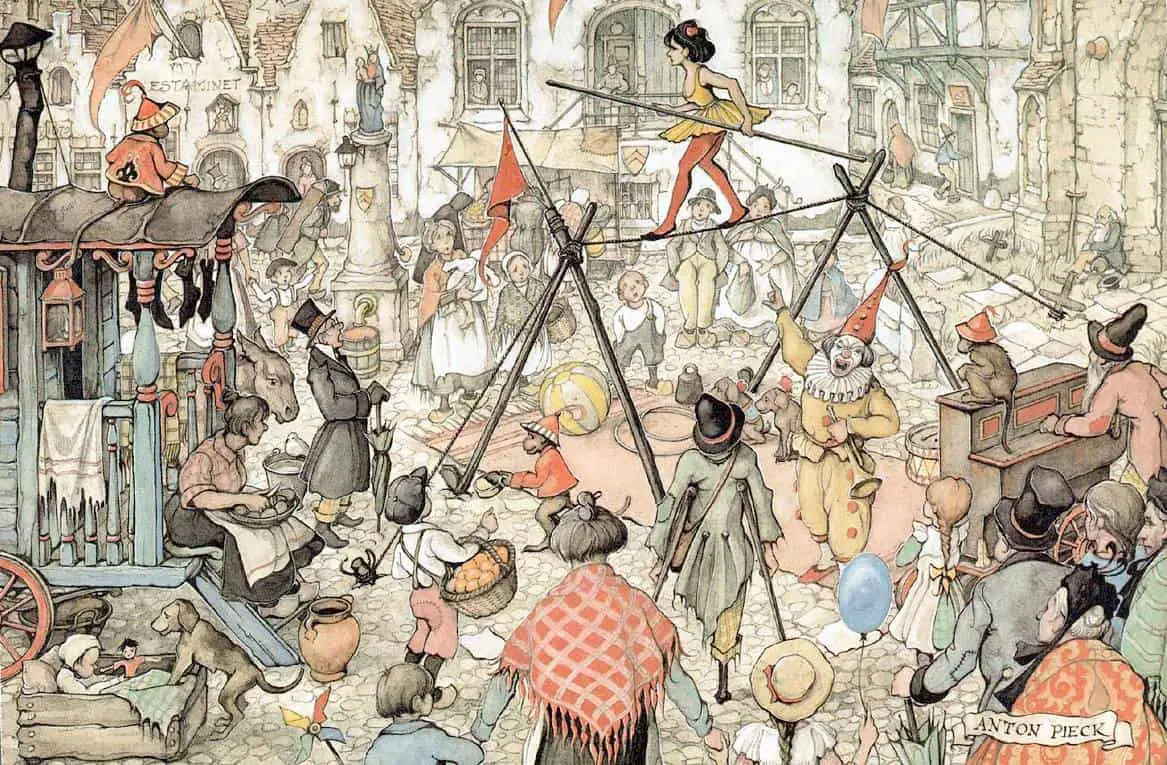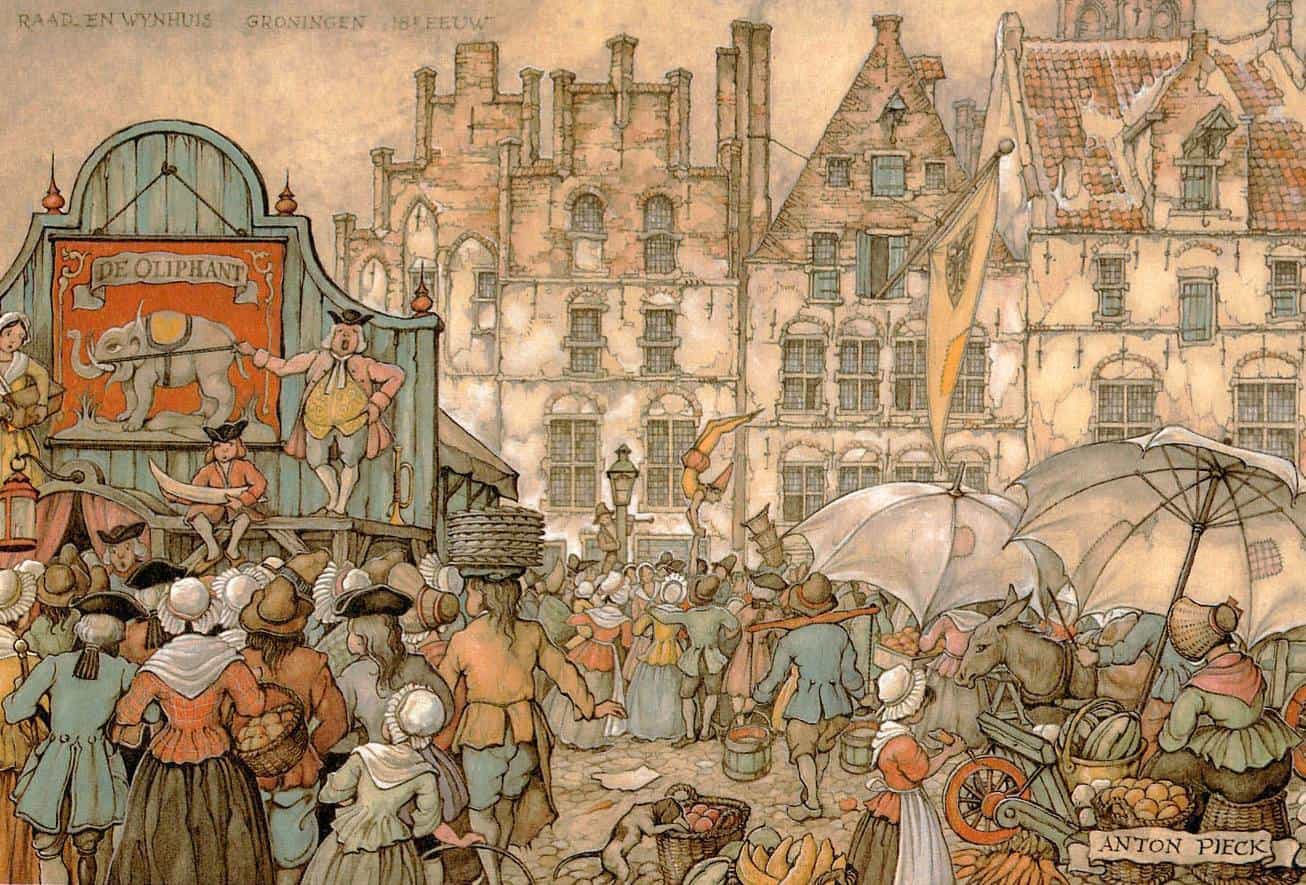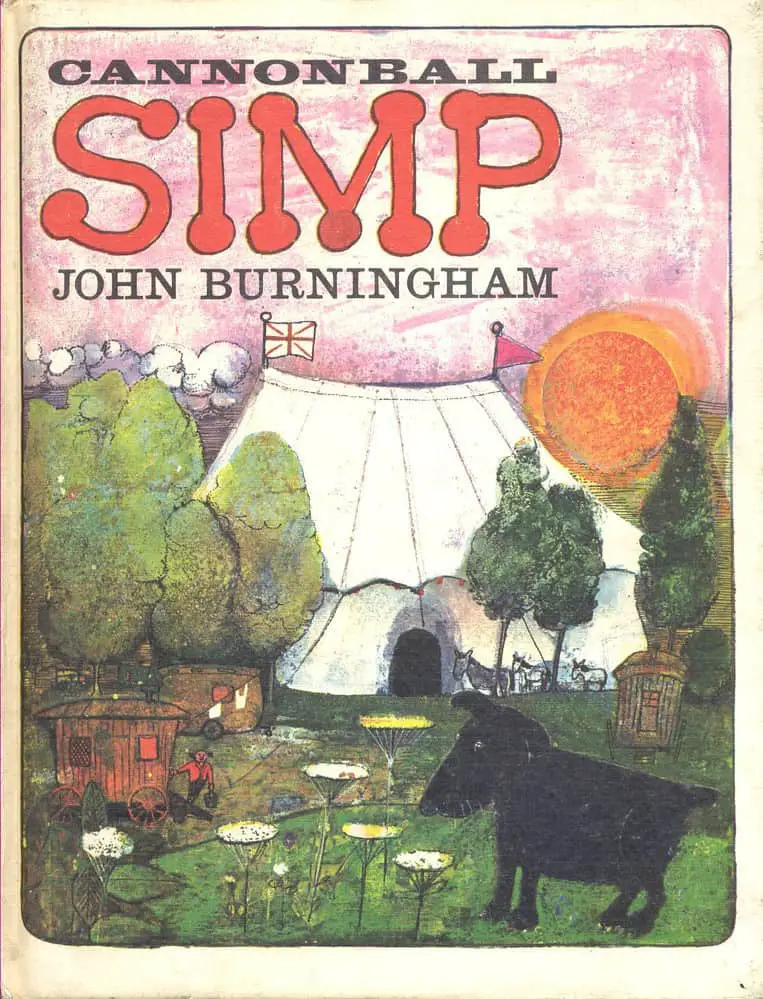Cannonball Simp is a picture book written and illustrated by John Burningham, first published 1966. This is a story from an earlier Golden Age of children’s literature, one in which ending up in a circus is a good outcome, and also, well, words sometimes change.
It’s shame that the 2020 meaning of the word ‘simp’ means something completely different, but there’s always a chance that a harmless word used in 1966 by a children’s storyteller will be appropriated by terrible people at some point. I won’t link to a definition here. Those who don’t know the modern meaning are ill-advised to find out.
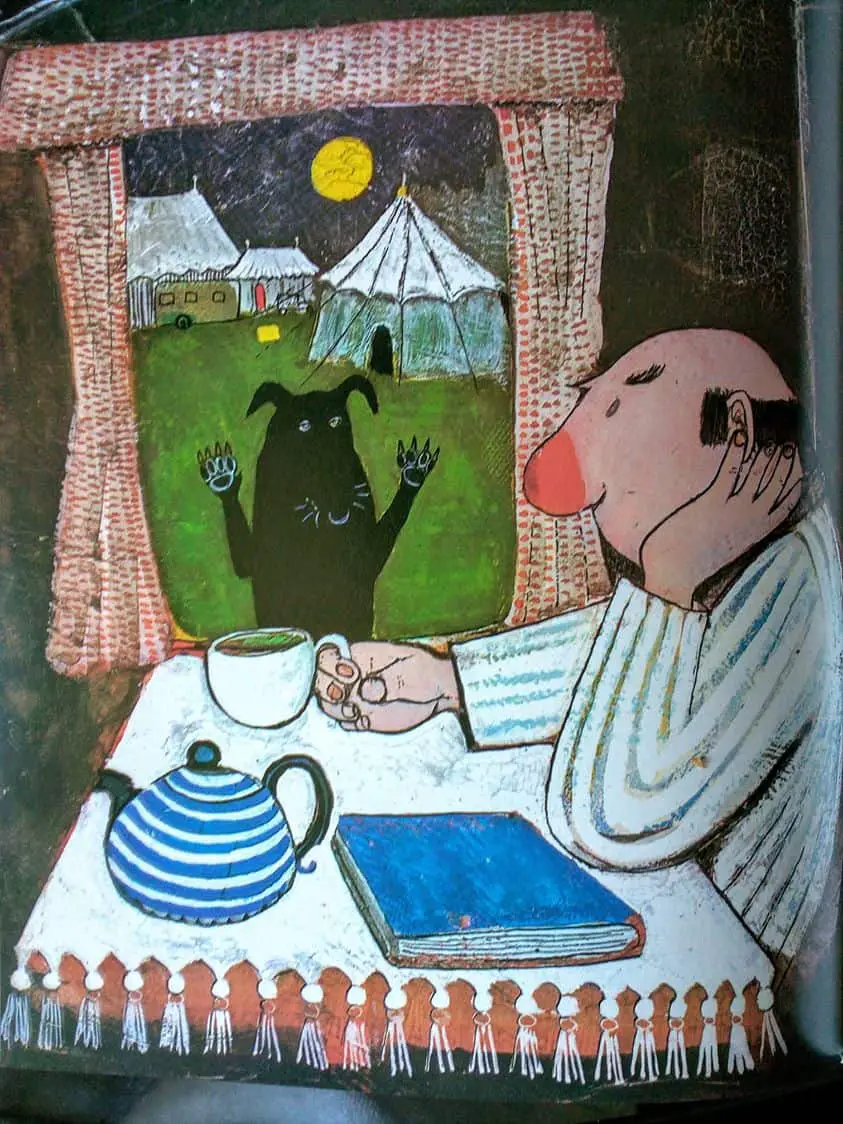
SETTING OF SIMP
- PERIOD — The twentieth century
- DURATION — A week or so? In human time, not much. For Simp, it would feel more like a year, with the complete rollercoaster of emotions.
- LOCATION — England
- ARENA — The story is mythic structure and readers will conceive of this story as a road/path through a large arena of space.
- MANMADE SPACES — Cities and suburbs, finally the enclosed arena of a circus, narrowing down to a stage surrounded by an adoring crowd.
- NATURAL SETTINGS — This story is very much contingent upon human technology. Simp is a dog living within a human domain and utterly dependent upon the kindness of humans. There’s no fairytale forest where she might live a lonely but well-fed existence.
- WEATHER — John Burningham’s illustrations are gritty and the hand of the artist is evidence, resulting in a grungy feel which puts the viewer in mind of the dirtiness of the human inhabitated spaces but also of an inhospitable climate. This feeling peaks when Simp looks at the clown through the window of his caravan. The clown’s nose is clownish, but almost makes him look like he’s got a headcold.
- TECHNOLOGY CRUCIAL TO THIS PARTICULAR STORY — The dog catcher and his van are crucial.
- LEVEL OF CONFLICT — The wider world is industrialised to the point where everyone is too busy getting on with their aspirationally capitalist lives to notice or care for an abandoned pup among them.
- THE EMOTIONAL LANDSCAPE — Simp sees the world exactly how it is — she knows she is unpretty and that this will hamper her chances of finding a family and a loving home. Until she happens upon the circus, she does not know that the circus is another place to find misfits, and that as a misfit she’ll find a home there.
STORY STRUCTURE OF SIMP
There are many stories about outcast animals or creatures who wander round narrowly avoiding death until finding a new family. We see numerous examples in fairytale. Cannonball Simp reminds me of two fairytales in particular: Thumbelina and The Ugly Duckling. Hans Christian Andersen was especially attracted to stories about rejected outcasts.
PARATEXT
A small dog, abandoned near a trash dump and captured by a dog catcher, finds a home for herself when she is befriended by a circus clown whose act needs improving.
marketing copy
SHORTCOMING
Simp is ugly.
I know this sounds ridiculous, but only because people are ridiculous. Racism extends to black dogs. Golden dogs don’t suffer the same suspicion and are more easily rehomed.
She will eventually meet the human equivalent of an abandoned dog — a clown who is first outcast by society by dint of being a clown, and then by the circus men who will fire him if he can’t make enough money for them.
DESIRE
Simp wants a family. Every child’s basic need and readily relatable.
OPPONENT
First the owner of her mother doesn’t want her. Then society ignores her as an outcast. This general indifference coalesces in the dogcatcher.
Because this is a mythic journey, Simp also meets characters who help her. The rats at the garbage dump give her bread, but can’t find enough food for themselves let along a dog, and advise her to move on. (That’s the part that reminds me of Thumbelina.)
PLAN
Since this is a melodramatic tale, Simp has no plan until she starts to feel less thrown around by circumstances. The change happens when she has the idea to be a cannonball. (This is the point where I worry for Simp.) Normally the plan part of a story happens before the big battles, interwoven into the character’s struggles, but in this case, the planning stage comes later, after the near death experience.
THE BIG STRUGGLE
The dog with the beard is functioning as the wise old man archetype. The knowing reader will understand that, without a family to collect her, Simp is destined for the gas chamber. This is a good example of a plot point that will be understood differently by differently aged readers; the reader too young to understand the stakes is also too young to deal with those stakes.
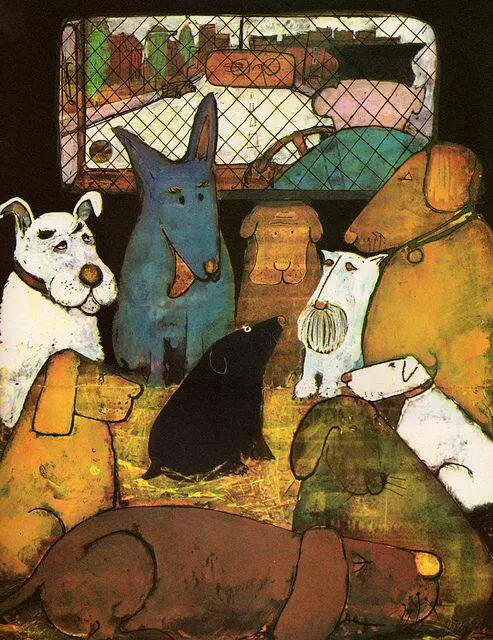
But Simp manages to escape from the dog catcher.
ANAGNORISIS
Simp’s first revelation coincides with her plan — she may be ugly but she makes a good cannonball owing to her blackness and rotundity.
NEW SITUATION
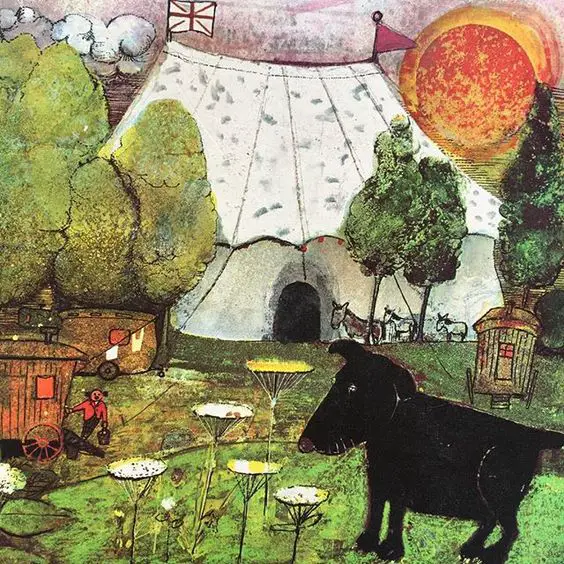
Simp will continue to live with the clown, still on the road, but this time with a new family. Not only has he found a family, he has also found an adoring audience who love to see him shot out of a cannon.
We know the moment Simp has found her new family: She sleeps at the end of the clown’s bed.
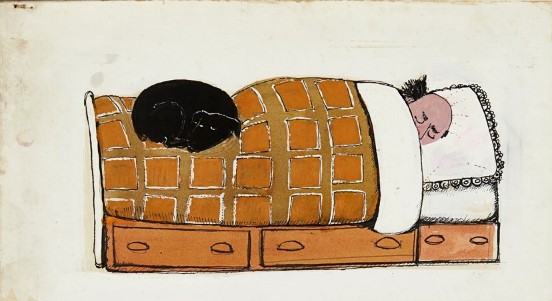
EXTRAPOLATED ENDING
I know we’re supposed to believe this is perfectly safe, but I believe there’s an accident waiting to happen.
But even if the cannonball trick works well forever, I’m still salty that the clown and the dog are making money for those capitalist fvckers who run the circus, who are quite happy to metaphorically fire their talent. It would’ve been a happier ending if the clown and the dog struck out on their own, imo.
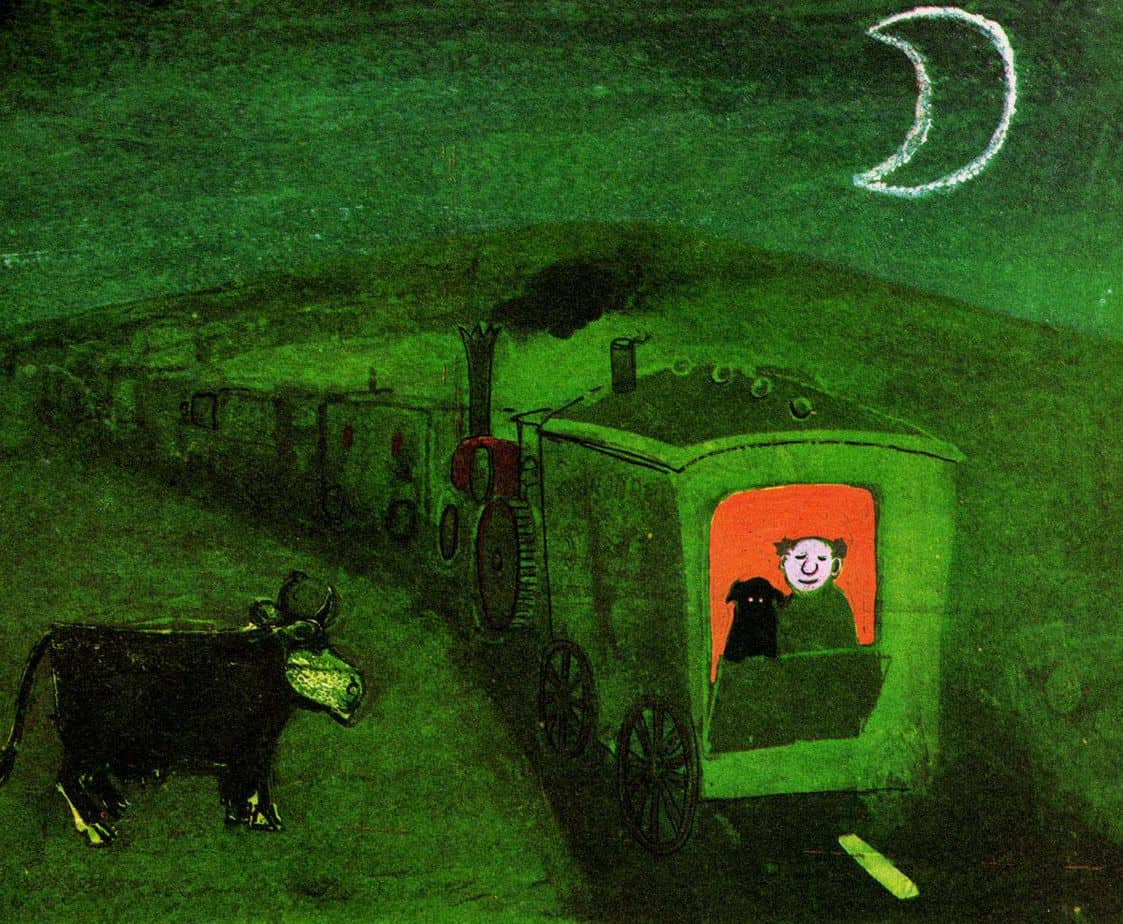
RESONANCE
Apart from the degradation of the word ‘simp’, a few other cultural evolutions have happened since Cannonball Simp was published, and these I can’t complain about: More and more parents avoid supporting the exploitative industry of the traditional travelling circus, which is basically terrible for animals. Therefore I’d guess that fewer modern children will have ever seen a circus, familiar with the basic concept only via retro children’s stories such as this one. Modern children, at least where I live, will have been to related festivals and carnivals such as rural ‘shows’, which are less and less about the stock animals and more about the coffee, the rides and the show bags.
I was a child of the 80s and I did visit the circus once. Significantly, I was taken by my Nana rather than by my parents. My grandparents’ generation were about the last en masse to consider a trip to the circus an important part of childhood.
The circus still exists. However, I haven’t been. I don’t know anyone who’d support the industry and fail to see how they survive in Australia. I guess the shows look a little different these days, but who knows.
Cannonball Simp was adapted for TV in the 1980s, which was the tail end of the golden age of the circus.
THE STORYBOOK CIRCUS
The change in approach to the storybook circus mirrors changes to the storybook zoo. Below are some circus illustrations from various picture books.
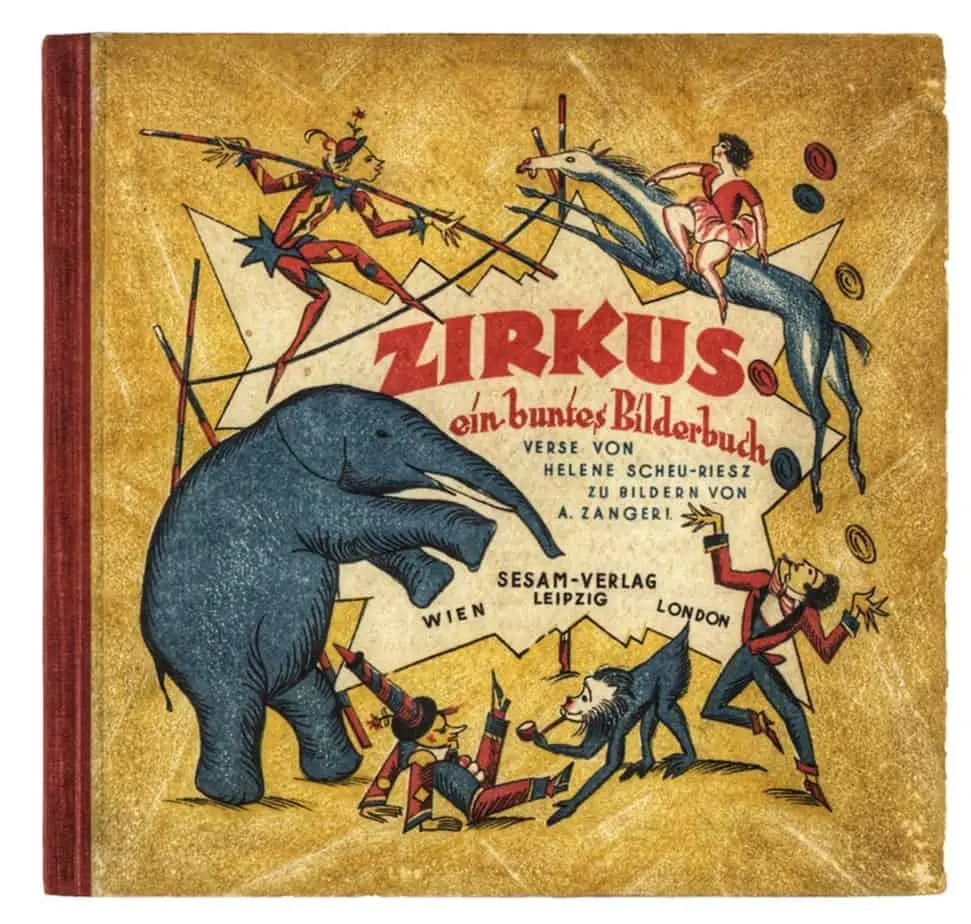
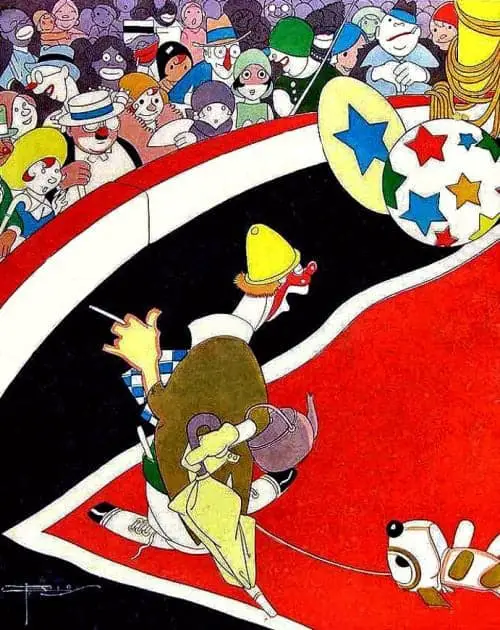
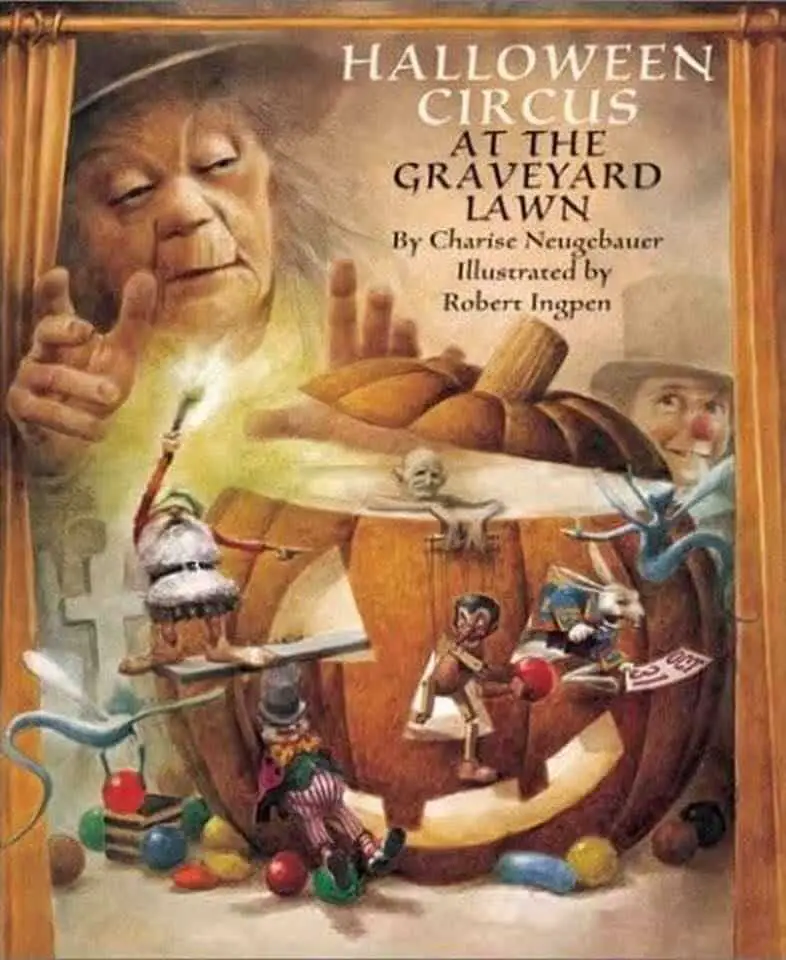
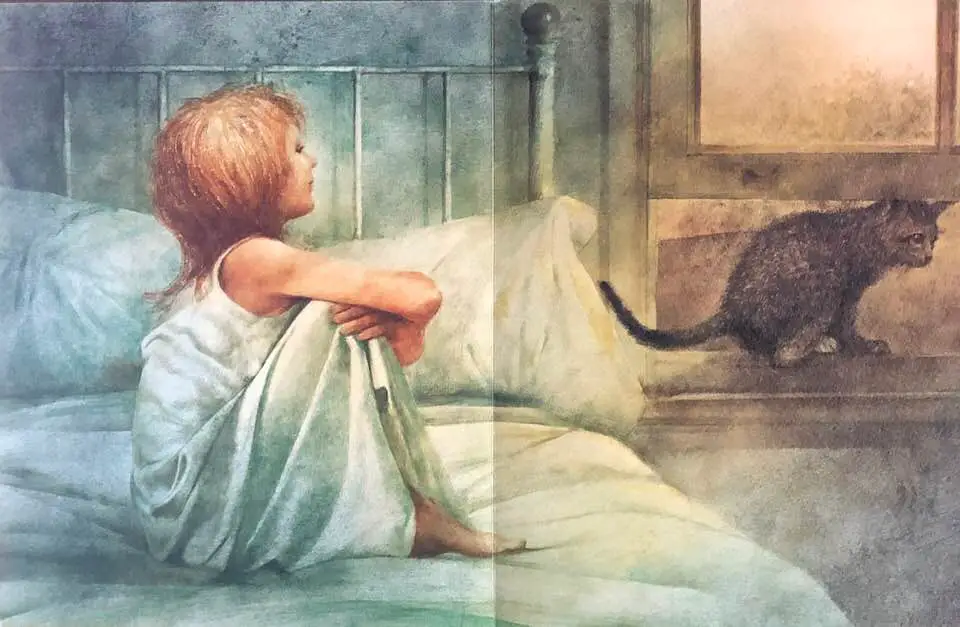
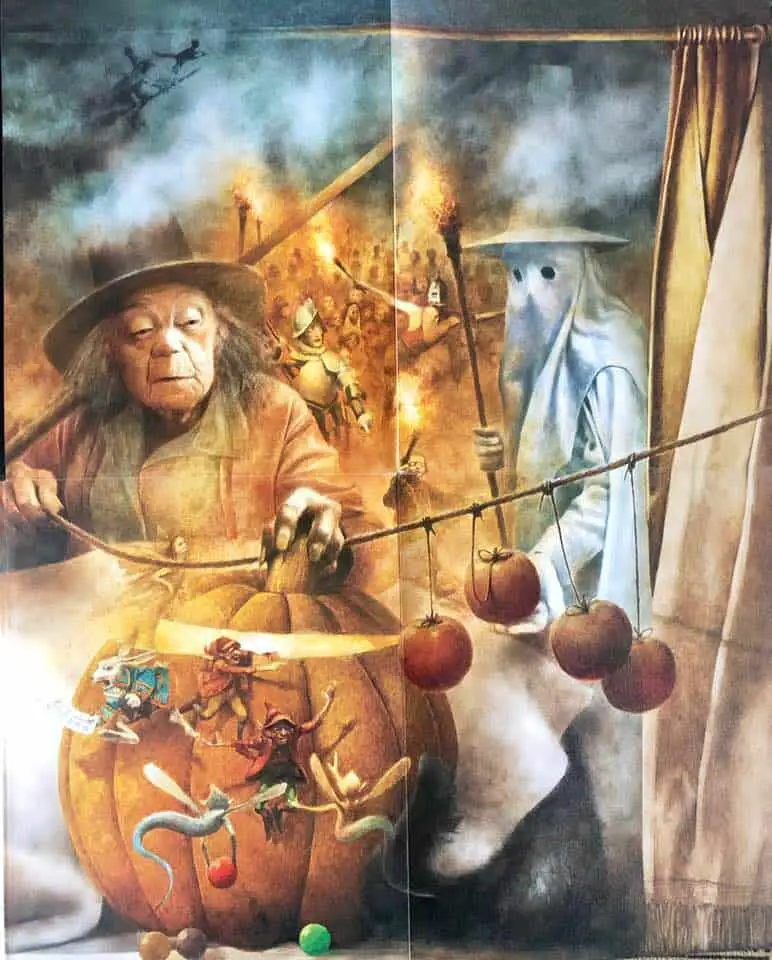
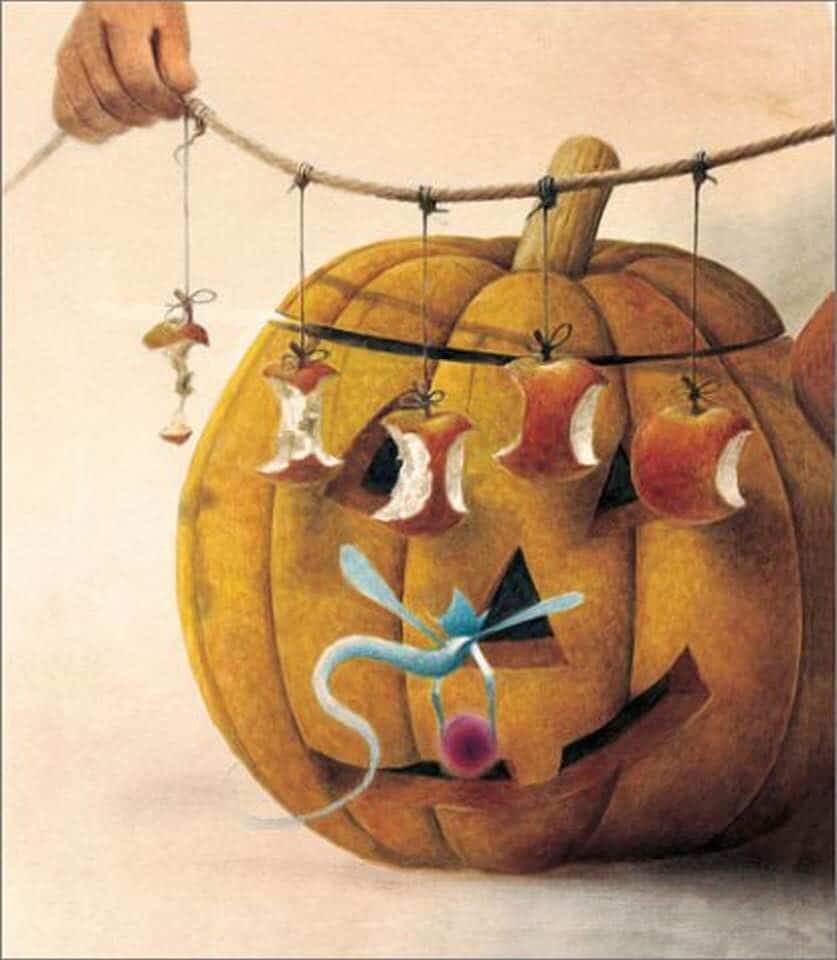
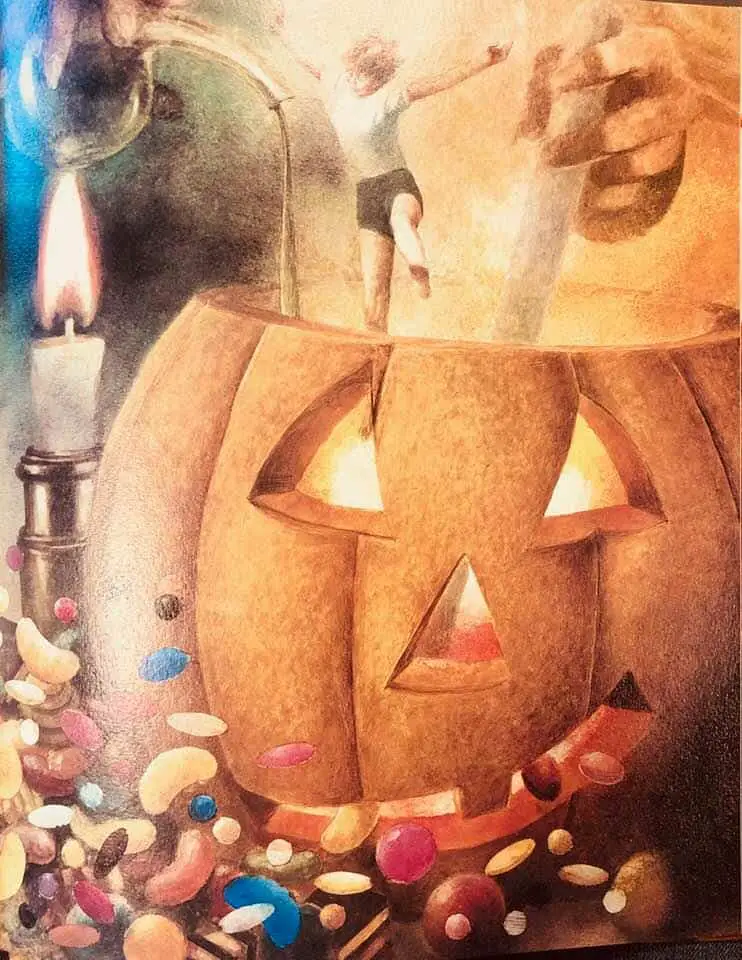
The circus hasn’t always involved the iconic big tent. These illustrations by Anto Pieck show how the circus evolved from showing off in the town square. Then I guess locals get bored of your tricks so you start travelling from town to town, finding a new audience.
